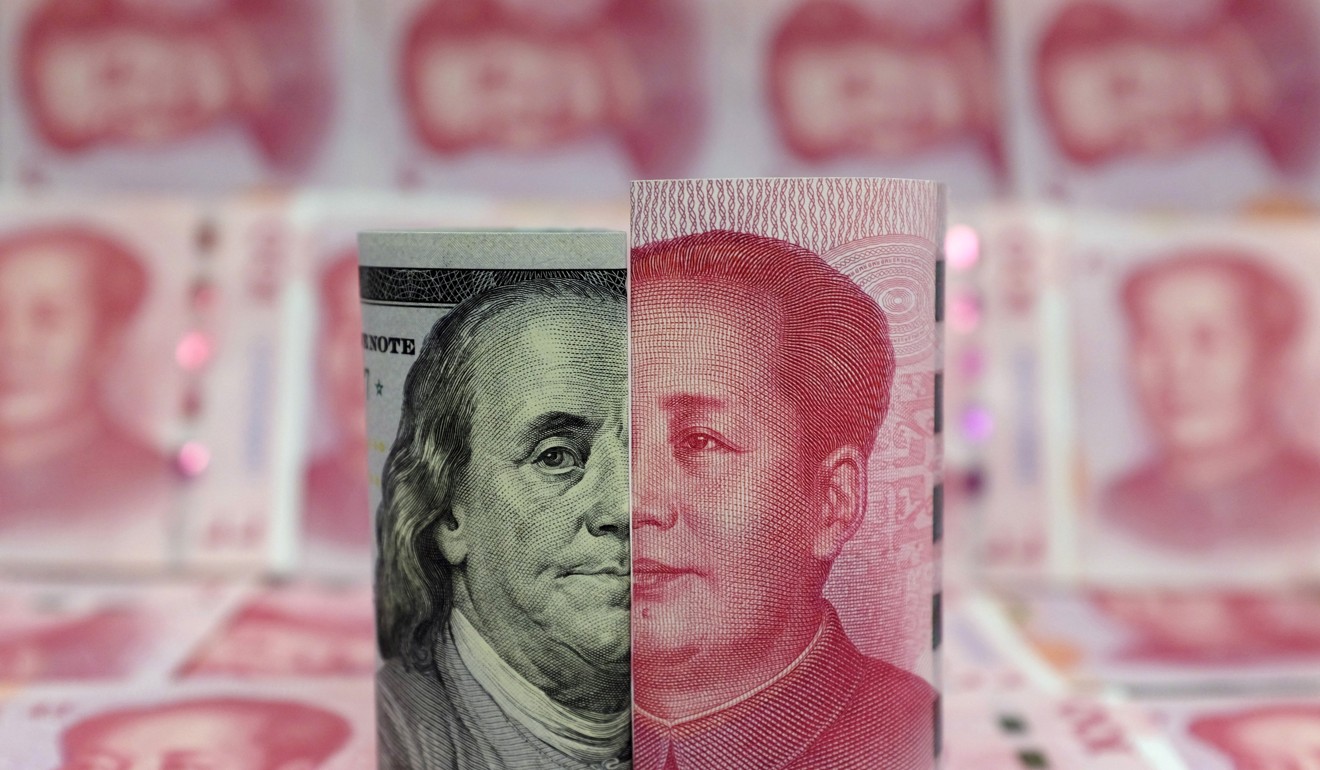
Volatility expected for Chinese yuan, as experts diverge on 2019 outlooks
- Traders and fund managers are predicting a year of volatility for the yuan, despite its strong start to 2019
- A sharp appreciation in the currency already appeared to be rapidly losing steam on Monday

Traders and fund managers are predicting a year of volatility for the yuan, despite its strong start to 2019.
A sharp appreciation in the currency already appeared to be rapidly losing steam on Monday. It was changing hands at 6.7892 against the US dollar, down 0.17 per cent. Last week, the yuan posted its first weekly decline in five weeks, leaving it up 1.5 per cent so far this year.
The uptick was on the back of a weakened US dollar, optimism over a permanent trade war truce with the United States and the hope that the Chinese authorities would intervene to support the yuan.
However, analysts are now questioning whether Beijing will continue to prop up the yuan, given the country’s narrowing current account surplus and the slowing domestic economy, both of which are likely to weaken the currency.
Imports are outstripping exports, leading to a decline in China’s current account. This may lead China to accelerate the opening up of domestic capital markets to foreign investment, as it looks to redress its balance of payments (BOP).
This could lead to increased volatility, experts said.
“The driving forces for a weaker yuan include a slowing domestic economy, a narrowing current account surplus, and the authorities’ tolerance for greater foreign exchange flexibility,” said Haibin Zhu, JP Morgan’s China chief economist.
In recent months, however, the Chinese government has maintained its tried and tested interventionist stance towards the currency.
The People’s Bank of China (PBOC) has been propping up the yuan since August to prevent rapid depreciation.
It introduced functions that help curb sharp movements in the yuan, including the countercyclical factor in currency fixing calculation, and controls on shorting.
It also signed a memorandum of cooperation with the Hong Kong Monetary Authority (HKMA) for the issuance of bills in Hong Kong that would allow it to manage yuan liquidity outside the mainland.
These actions helped engineer a halt to the yuan’s decline against the US dollar last year, when it slumped 5.7 per cent.

They also prolonged the sort of policies the PBOC has been using to control the yuan’s movements for the past decade. In recent years, it imposed tight capital controls to stop money leaving China, even as it continued liberalising the flow of money into China.
As a result, the yuan appreciated or depreciated against the US dollar by a maximum of 7 per cent a year. A basket of currencies from the US’ other major trading partners was more volatile in comparison, gaining or losing up to 13 per cent against the dollar.
But with China’s economy struggling, policymakers are entering uncharted territory.
The government will be concerned by the dip in gross domestic product (GDP), which grew at 6.4 per cent for the final quarter of last year, its lowest quarterly growth reading since the global financial crisis.
Analysts are, as a result, diverging in their outlooks for the yuan in 2019, particularly when it comes to policy support.
Melody Jiang, Asia strategist at SEB, a Swedish bank, sees the yuan on the strong side, forecasting it to end the year at 6.75 against the dollar. China’s economy will continue to slow moderately while US-China tensions are unlikely to escalate on the tariff front, she said.
Meanwhile others such as JP Morgan’s Zhu said he expected the PBOC to tolerate greater yuan flexibility, and for the currency to weaken to 7.10 per dollar by the end of the year.
“The BOP account appears stable on the surface. Much of the rise in net capital inflows has been due to a sharp reduction in outward foreign direct investment, a very large rise in offshore corporate borrowing, and an increase in portfolio inflows, which could be sensitive to exchange rate and interest rate fluctuations,” Zhu said.
HSBC economist Qu Hongbin also predicted the yuan to end the year at 7.10 because of lingering uncertainty over trade tensions between the US and China.
The government’s deleveraging campaign has already tightened financial conditions and remain a risk to the economy, Qu said.
Yan Yan-liang, chief economist at the State Administration of Foreign Exchange, said the government was “not afraid of breaking 7.00 level against the US dollar”, a rate which would be viewed as a symbolic level of depreciation.
The key question was whether breaking 7.00 would cause herding behaviour that would result in excessive depreciation and hurt the stability of financial markets, Yan said.
“In the future, we should continue to increase the flexibility of the yuan exchange rate system. There is no need to hold on to a particular level,” Yan told local media last week.
Greater flexibility in the yuan exchange is something most analysts are aligned on.
“By default, if you have a more liberalised current and capital account, that would mean you no longer have a controlled exchange rate,” said Aidan Yao, senior emerging Asia economist at AXA Investment Managers. “The yuan needs to become more liberalised and market driven in this case.”